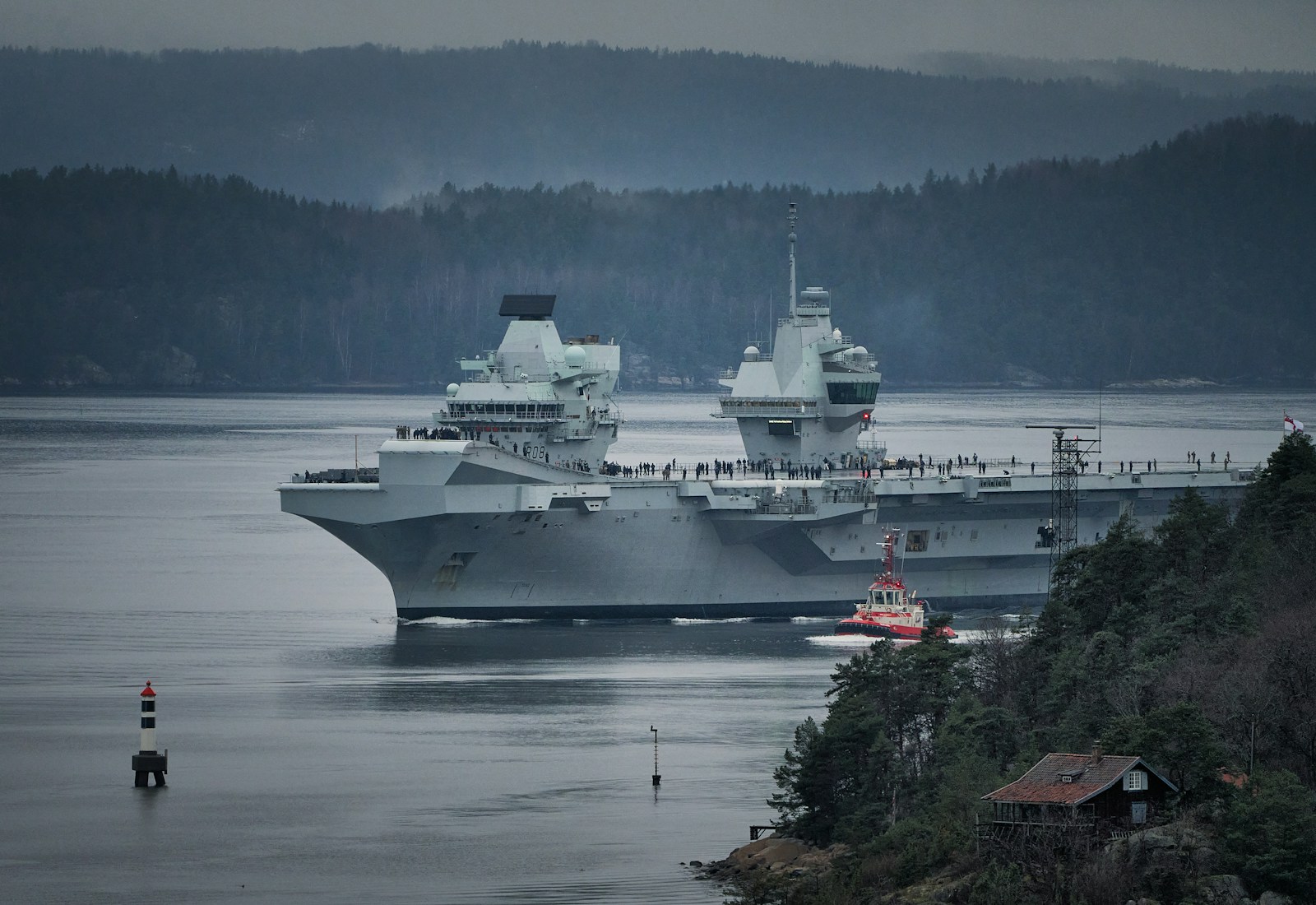The landscape of global naval power is undergoing a profound transformation, driven by the rapid advancements in artificial intelligence (AI). Far from being a mere technological add-on, AI is emerging as a foundational pillar for the United States Navy, fundamentally reshaping strategy, operations, and the very nature of sea combat. This isn’t just about faster computers; it’s about smarter, more adaptive, and ultimately, more effective naval forces. The integration of AI in US Naval Warfare promises to deliver unparalleled advantages, from enhanced situational awareness to autonomous mission execution, securing America’s dominance on the high seas.
As the maritime domain becomes increasingly contested and complex, the need for intelligent systems capable of processing vast amounts of data, predicting threats, and optimizing resource allocation has never been more critical. The US Navy is at the forefront of this revolution, strategically investing in AI capabilities to maintain its technological edge and ensure readiness for future conflicts.
The Dawn of AI in Naval Strategy
Historically, naval warfare has evolved through revolutions in propulsion, weaponry, and communication. Today, we stand on the cusp of an intelligence revolution. The sheer volume and velocity of data generated in the maritime environment—from sonar pings and satellite imagery to cyber signals and sensor readings—overwhelm human cognitive capacity. This data deluge, however, is precisely where AI excels. Machine learning algorithms can identify patterns, anomalies, and potential threats with speed and accuracy far beyond human capabilities.
The strategic imperative for adopting AI in US Naval Warfare stems from several factors: the need to deter peer competitors, manage global responsibilities, and protect vital sea lanes. AI offers the ability to augment human decision-making, reduce human risk in hazardous environments, and unlock new operational concepts. From the Pentagon’s Project Maven, which demonstrated the power of AI for processing vast amounts of imagery data, to the Navy’s own task forces dedicated to AI integration, the commitment is clear: AI is not an option; it’s an imperative for the future of naval power.
Key Pillars of AI Integration in US Naval Warfare
The application of AI across the US Navy is multifaceted, impacting nearly every aspect of operations. These key pillars represent the most significant areas where AI is already making, or is poised to make, a transformative impact.
Autonomous Systems & Unmanned Vessels
Perhaps the most visible manifestation of AI’s influence is the proliferation of autonomous and unmanned systems. The US Navy is heavily investing in a range of Unmanned Surface Vessels (USVs), Unmanned Undersea Vehicles (UUVs), and Unmanned Aerial Vehicles (UAVs). These platforms, powered by advanced AI algorithms, can perform dull, dirty, or dangerous missions without putting personnel at risk. Their roles include:
- Intelligence, Surveillance, and Reconnaissance (ISR): Persistent monitoring of vast ocean areas.
- Mine Countermeasures: Identifying and neutralizing underwater explosives safely.
- Logistics and Resupply: Autonomously delivering supplies to deployed units.
- Distributed Maritime Operations: Extending the reach and sensor networks of the fleet, creating a more complex challenge for adversaries.
The goal is not to replace humans but to create a robust human-machine team, where AI-powered autonomous systems enhance the Navy’s capacity to operate effectively in complex and contested environments.
Predictive Maintenance & Logistics
Maintaining a global fleet is an immense logistical challenge. Traditional maintenance schedules often lead to unnecessary downtime or, worse, unexpected failures at sea. AI is revolutionizing this by enabling predictive maintenance. By analyzing sensor data from machinery, AI algorithms can anticipate equipment failures before they occur, allowing for proactive repairs and optimized maintenance schedules. This significantly:
- Reduces maintenance costs.
- Increases fleet readiness and availability.
- Optimizes supply chain management for spare parts.
This application of AI in US Naval Warfare directly translates to more time ships are operational and less time they spend in port for repairs, a critical factor for maintaining global presence.
Enhanced Situational Awareness & Decision Making
In the fog of war, superior situational awareness and rapid decision-making are paramount. AI plays a critical role here by fusing data from disparate sources—radar, sonar, electronic warfare, intelligence feeds, and more—to create a comprehensive, real-time Common Operational Picture (COP). AI-powered systems can:
- Identify and classify threats instantly.
- Predict adversary movements and intentions.
- Recommend optimal courses of action to human commanders.
- Process information orders of magnitude faster than traditional methods.
This augmentation empowers commanders to make more informed and timely decisions, potentially turning the tide in high-stakes encounters. The synergy between human intuition and AI’s analytical prowess is key to future naval operations.
Cyber Warfare & Information Dominance
The modern battlefield extends into the digital realm. Cyberattacks can cripple command and control systems, disrupt communications, and compromise critical data. AI is indispensable for both defending against and prosecuting cyber warfare. AI algorithms can:
- Detect sophisticated cyber threats and anomalies in real-time.
- Automate responses to cyberattacks, minimizing damage.
- Analyze vast amounts of network traffic to identify vulnerabilities.
- Support offensive cyber operations to degrade adversary capabilities.
Ensuring information dominance and securing critical networks is a non-negotiable aspect of modern naval power, and AI is at its core.
Challenges and Ethical Considerations for US Navy AI
While the potential of AI is immense, its integration also presents significant challenges and ethical dilemmas. One primary concern is data quality and bias; AI systems are only as good as the data they’re trained on. Biased or incomplete data can lead to flawed decision-making. Cybersecurity for AI systems themselves is also paramount, as compromising these systems could have catastrophic consequences.
Furthermore, the ethical implications of lethal autonomous weapons systems (LAWS) are a continuous point of debate. While the US Navy currently requires human oversight for lethal actions, the discussion around the “human in the loop” versus “human on the loop” for future AI applications remains active. Trust in AI, legal frameworks for accountability, and the need for rigorous testing and validation are all critical hurdles that must be addressed as AI in US Naval Warfare matures.
Finally, adapting the naval workforce to leverage AI effectively is a significant challenge. This involves training personnel, developing new skill sets, and fostering a culture that embraces human-AI collaboration.
The Road Ahead: Future Vision for AI in US Naval Warfare
The journey of integrating AI into the US Navy is ongoing and dynamic. The vision for the future involves a truly networked fleet, where every platform, sensor, and system is interconnected and AI-enhanced. This future will see:
- Adaptive Learning Systems: AI systems that continuously learn and adapt to new threats and environments.
- Enhanced Human-Machine Teaming: Seamless collaboration where humans provide strategic direction and oversight, while AI handles complex data processing and rapid tactical execution.
- Digital Twins: Virtual replicas of ships and systems that allow for testing, training, and predictive analysis without physical constraints.
- Global AI-Powered Command & Control: Unified, intelligent command systems that provide unparalleled awareness and control across vast distances.
The US Navy recognizes that maintaining its strategic advantage depends on its ability to innovate faster and integrate AI more effectively than its adversaries. This requires continued investment in research and development, fostering partnerships with industry and academia, and cultivating a technologically adept workforce.
Conclusion
The integration of AI in US Naval Warfare is not just a technological upgrade; it represents a fundamental shift in how the United States Navy will operate, fight, and maintain global security in the 21st century. From empowering autonomous systems and optimizing logistics to enhancing battlefield awareness and strengthening cyber defenses, AI is rapidly becoming the nervous system of the modern fleet. While challenges remain, the commitment to leveraging AI’s transformative power is unwavering. By strategically embracing artificial intelligence, the US Navy is ensuring it remains the most formidable maritime force, ready to defend national interests and preserve peace across the world’s oceans.


